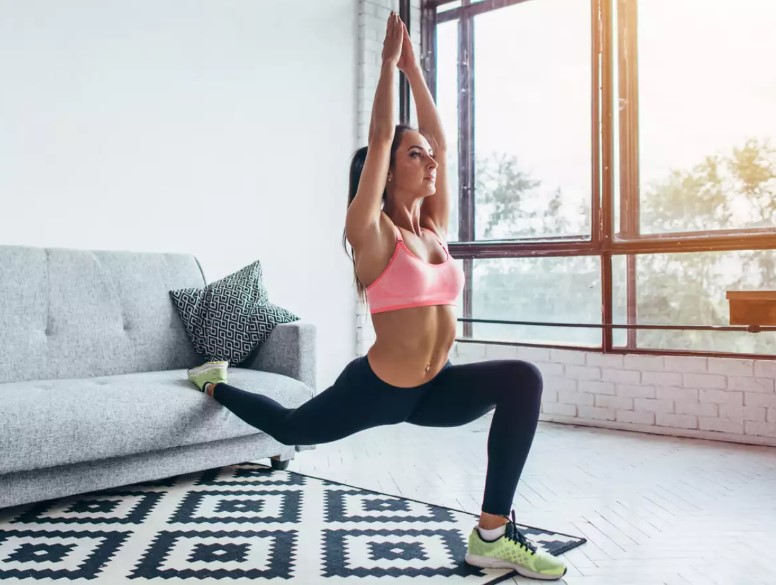When we were young we probably moved a lot and played a lot. However, if you are an adult, this light physical activity is done very rarely, just moving your body feels lazy. So to keep your body moving and active, follow the examples of light physical activity below.

Simple examples of light physical activity
The WHO defines physical activity as any physical movement that is generated by skeletal muscle and requires energy.
Light physical activity, on the other hand, is defined as activities that require little energy and do not cause changes in breathing.
The Ministry of Health of the Republic of Indonesia (Kemenkes RI) said that light physical activity consumes less than 3.5 kcal of energy per minute.
Examples of some activities that are classified as light activities include walking, sweeping the porch, typing in front of the laptop, and gaming.
Although it is light physical activity, it turns out that there are many benefits that you can get from doing it.
1. Take a stroll, walk, walk, jog, and exercise in the morning
Regular light physical activity helps prevent cancer, heart disease, and other chronic diseases.
However, the frequency of physical activity decreases with age, especially among older people.
Instead, you can engage in light physical activity like a leisurely walk.
A study from the Journal of Epidemiology (2015) attempted to observe the benefits of regular walking in improving the health of older people.
This study was conducted on 1,239 men who are members of the community aged 64-65 years.
The results showed that walking for 1-2 hours a day could reduce the risk of death for both men without a serious illness and those with a serious illness.
The Benefits of Proper Walking?
By practicing proper walking techniques, you can surely reap the benefits of walking. Especially if you do it regularly.
Quoted by the Arthritis Foundation, here are several health benefits of walking you can feel.
Strengthens the bones. Walking prevents loss of bone density, so you have a lower risk of osteoporosis and broken bones.
relieve joint pain. This activity can increase blood supply to joints and cartilage, increasing oxygen and nutrients to those parts.
Increase muscle strength. The muscular system in certain parts of the body can get stronger after walking regularly, particularly the core muscles, hamstrings, and calf muscles.
Promotion of blood circulation. Cardio exercise can improve blood flow, thereby lowering blood pressure, strengthening the heart, and reducing the risk of heart disease.
Improves lung health. The increased respiratory rate when walking helps improve lung health, making it easier to breathe in the future.
Lose weight. 30 minutes of brisk walking a day can burn up to 200 calories. This can help with weight loss.
Improve the mood. Walking helps release endorphins, hormones that trigger feelings of pleasure and make you feel better.
2. Doing homework
House cleaning tasks such as sweeping, mopping, or washing clothes can be categorized as light physical activities.
This activity also has a positive effect on health.
This is shown in a scientific report by BMC Public Health (2013), which examined the effect of homework physical activity on total weekly physical activity.
The research was conducted on 4,563 adults. The data is collected through personal interviews via online platforms.
Research shows that homework can burn calories and tone muscles.
Even brief periods of light physical activity have the potential to improve physical fitness, especially for people just starting with regular exercise.
3. Stretching exercises
As you age, your muscles and joints usually become less flexible.
Well, stretching regularly, helps the body move more freely.
Quote from Harvard Health Publishing: Stretching can keep muscles strong, healthy, and flexible. Stretching also helps with joint mobility.
If you rarely stretch, your body muscles will easily shorten and tighten.
This leads to a weakening of muscle strength so that the muscle contracts completely during movement.
They are also at a higher risk of muscle strain, joint pain, and muscle breakdown.
You can experience these disorders if you have insufficient exercise and poor posture.
4. Painting or drawing
Aside from being classified as light physical activities, painting and drawing are also beneficial for relieving stress and anxiety.
In an article in the Journal of the American Art Therapy Association (2016), a group of researchers measured cortisol levels in 39 healthy adults.
Cortisol is a hormone that regulates the body to response to stress.
They found that 45 minutes of drawing and painting with an art therapist had the potential to lower cortisol levels.
The paper also shows that there is no difference in health outcomes between professional artists and ordinary people.
This means that no matter your skill level and creativity, you will still feel the good benefits of this light physical activity.
5. Working at a standing desk
People who sit a lot every day have a higher risk of diabetes and heart disease.
In addition, sitting all the time burns very few calories and makes it easier to gain weight or risk obesity.
A standing desk is a desk that you can stand comfortably at while you work.
This table can be adjusted in height while sitting or standing.
A scientific review in the journal Human Factors (2009) attempted to observe whether standing work altered office work efficiency.
The study conducted a randomized controlled trial with 60 male participants aged 18 to 35 years.
The results showed that using a standing desk for 4 hours a day improved mood and energy.
In addition, standing work tends to increase productivity.
You still don’t want to do physical activity despite the light? Although there are several health benefits you can get.
So don’t hesitate to do it more often.
